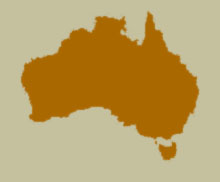Synonyms
Halmus viridis Slipinski and Giorgi, 2006: 279.
Diagnosis
The elongate, somewhat flattened body in combination with the metallic greenish coloration, long prosternum and recurving postcoxal line distinguish this species from the other Halmus.
Description
Length 3.7-3.9 mm. Male. Body metallic greenish; epipleura, coxae, tarsi and last 3-4 last abdominal ventrites brownish. Body elongate, somewhat flattened. Head micro reticulate between punctures; punctation about as large as eye facets, nearly 1.5 diameters apart. Eyes dorsally separated by slightly more than 2 times the width of an eye; inner ocular margin diverging apically. Antennomeres 5, 6 and 7 about the same length. Clypeus distinctly emarginate medially, with lateral extension markedly narrow. Terminal maxillary palpomere securiform; terminal labial palpomere conical; less than 2 times longer than basal width; distinctly shorter than the preceding segment. Pronotal surface polished between punctures on disc, micro sculptured on anterior angles, the micro sculpture somewhat rugose; punctation smaller than eye facets, shallower than on head, approximately 1.5 to 2 diameters apart, obsolete at anterior angles; lateral borders slightly rounded; prosternum relatively long in front of coxae, slightly more than 2 times longer than prosternal process widest width. Elytral surface polished between punctures; punctation stronger than on pronotum, about as large as to larger than eye facets, slightly deeper; lateral margin slightly reflexed. Abdomen with ventrite 6 relatively conspicuous, broadly emarginate at apex; surface of ventrite 1 polished between punctures; postcoxal line recurving apically, the line fairly distant from the posterior margin.
Male
Tegmen relatively short, about 1/2 the abdomen length; penis guide symmetrical, distinctly longer than parameres; parameres densely setose at apex, the setae long; strut slightly shorter than tegmen; penis as figured.
Female
Female externally similar to male except having the ventrite 6 truncate at apex.
Variation
Unknown.
 Distribution and Biology
Distribution and Biology
This species seems to be confined to the Snowy Mountains and adjacent areas of New South Wales.
Species References
Slipinski, S.A. 2007. Australian Ladybird Beetles (Coleoptera: Coccinellidae) their biology and classification. ABRS, Canberra. 286 pp.
Slipinski, A. and Giorgi, J.A. 2006. Revision of the Australian Coccinellidae (Coccinellidae). Part 6. Tribe Chilocorini. Annales Zoologici (Warszawa), 56(2): 265-304.
[ Top ]
